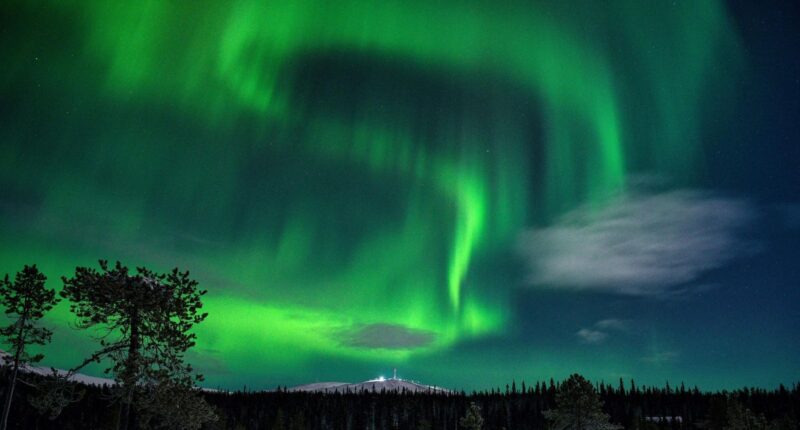Share this @internewscast.com
Topline
There may be an opportunity for some states in the northern U.S. to view the northern lights Wednesday night, and it’s possible the phenomenon may become more visible, according to the National Oceanic and Atmospheric Administration.
No geomagnetic storms or significant solar winds are forecast.
Lehtikuva/AFP via Getty Images
Key Facts
The NOAA forecast a Kp index of three on a scale of nine for Wednesday, suggesting the northern lights might be more visible farther from the poles, including just south of the Canadian border.
No geomagnetic storm conditions or “significant” solar wind effects are expected over the next three days, according to NOAA’s projections, though the Kp index may rise to around four later Wednesday, meaning more states could have a chance to see the northern lights.
Lesser auroral activity is expected Thursday and Friday, according to the NOAA, with a maximum Kp index of about two forecast for either day.
Where Will The Northern Lights Be Visible?
The northern lights will have a better chance of being seen throughout Canada and Alaska once the sun sets in the state. A lesser chance, marked by a curved “view line,” is forecast in parts of Washington, Idaho, Montana, North Dakota, Minnesota, Wisconsin and Upper Michigan. (See map below.)
Wednesday’s view line.
NOAA
What’s The Best Way To See The Northern Lights?
NOAA recommends traveling to a north-facing, high vantage point away from light pollution sometime between 10 p.m. and 2 a.m. local time.
What’s The Best Way To Photograph The Northern Lights?
If using a smartphone, NOAA suggests disabling flash, enabling night mode and relying on a tripod to stabilize the image. With a regular camera, photography experts told National Geographic it’s best to use a wide-angle lens, an aperture or F-stop of four or less and a focus set to the furthest possible setting to capture the northern lights.
Key Background
Activity on the sun’s surface achieved a “solar maximum” in late 2024, indicating the northern lights will be more visible through early 2026, according to NASA and NOAA. A “solar maximum,” coinciding with a “solar minimum,” occurs throughout the sun’s 11-year cycle and marks a respective increase or decrease in solar events like coronal mass ejections or solar flares. These events are responsible for aurora borealis, as electrons collide with molecules of oxygen and nitrogen in the Earth’s atmosphere, causing them to become “excited” before releasing energy in the form of colorful, swirling lights.







